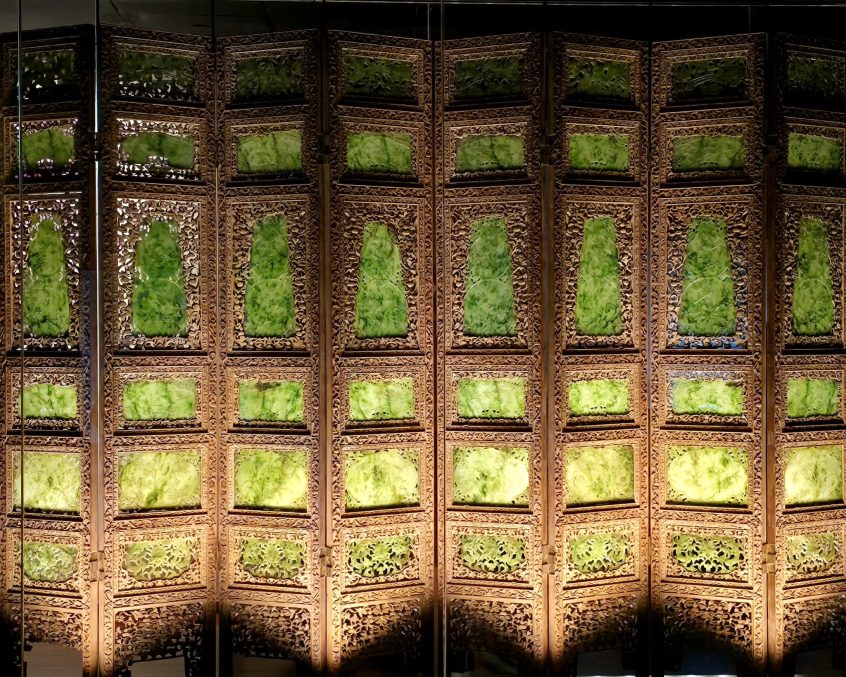The flight seemed to take forever, but it will have been worth the endless hours in the air and the lengthy layover. I’m traveling with my grandnephew, Tristan. This is his high school graduation present—a trip to anywhere he chose. He’s a well-traveled kid, and he selected Taiwan because he has studied Chinese, and had heard about the excellent food. I thought it was a great idea because I’d never been here before and had also been told about the friendly people, interesting museums, culture and most especially, the food. BTW, Taiwan is a milestone for me – it is the 100th country I’ve traveled in.
Taipei is exactly twelve hours ahead of New York City, so our bodies are in a state of total confusion. Despite that, we managed to have a full day, though towards the end both of us were struggling to keep our eyes open.
My first activity in any new country / city is to take a hop-on-hop-off bus to get a lay of the land. We walked to the subway and headed towards the main railway station to pick up the bus. The subway is modern, efficient, and has great signage. There are two routes taken by the bus and we did them both. Between the two we stopped to get something to drink. The Taiwanese love coffee and tea. Shops dedicated to those drinks are as common as they are in the US. Tristan didn’t want anything caffeinated, which is more difficult to come by. We finally settled on a mango drink. The ordering was as complicated as ordering coffee in a Starbucks. We had to decide size, hot or cold, how much ice, and how sweet it should be. The resulting drink was delicious, but unusual. It was a mix of liquid and jelly (but not like bubble tea)
As we drove around Taipei, here are things that surprised me: there are slews of extra-wide boulevards crisscrossing the city. They are shared by buses, trucks, cars, and motorbikes. Motorbikes almost outnumber cars. There is a lot of greenery, many small parks dot the city and trees line almost every major street. The basic architecture is nondescript, but that is alleviated by temples, shrines, and monuments in classic Chinese style. On shopping streets, of which there are many, the signs overtake the architecture. Because I can’t read a word of Chinese, they resemble a crazy patterned patchwork quilt. They are a riot of colors and shapes.
The city is busy with people, but not overly so. For a city of 2.5 million people, it feels quite comfortable.
Both Tristan and I got ideas for other things we’d like to do during out stay, which was part of my goal.
We “hopped-off” the bus at the National Palace Museum, which everyone I’d spoken with in advance of the trip said is a “must-see.” The museum holds a permanent collection of nearly 700,000 pieces of artifacts and artworks, primarily comprising items relocated from the Beijing Palace Museum and other institutions in mainland China. They were transported to Taipei during the government of the Republic of China’s retreat to Taiwan. The whole story is too long for here, but do a quick search to read about it, the story is fascinating.
It could easily take a couple of days to see everything in the museum. With a few hours we focused on just a few exhibitions: ceramics, jade, and scrolls and calligraphy. The diversity and quality of the work is impressive.
By 5pm, when the museum was closing, we were both pretty exhausted. In the taxi on the way back to the hotel I struggled to stay awake. Despite a list of restaurant recommendations as long as my arm, we decided to eat in the hotel. It took a lot of energy just to make it to the elevator. The food was delicious; my favorite was honey glazed fried squid. We also ordered stir fried short beef ribs and an abalone and pork dish. For desert we sampled salted custard buns. They were painted with a gold glaze and looked as beautiful as they tasted.
Tomorrow we’re off to a market tour and cooking class.

